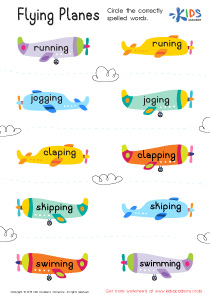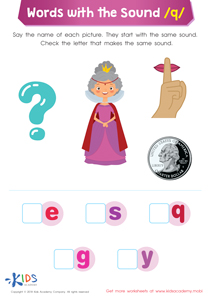Vocabulary enhancement Consonant Digraphs Worksheets for Ages 3-6
4 filtered results
-
From - To
Discover fun and educational "Vocabulary Enhancement Consonant Digraphs Worksheets" designed for children ages 3-6. Our expertly crafted worksheets help young learners master essential phonics skills by focusing on consonant digraphs such as 'ch', 'sh', 'th', 'wh', and 'ph'. These engaging activities use colorful images and simple exercises to help children build their vocabulary and pronunciation. By practicing with these worksheets, kids can enhance their reading abilities and lay a strong foundation for future language development. Perfect for preschool and early elementary-aged students, these worksheets make learning to read an enjoyable adventure.
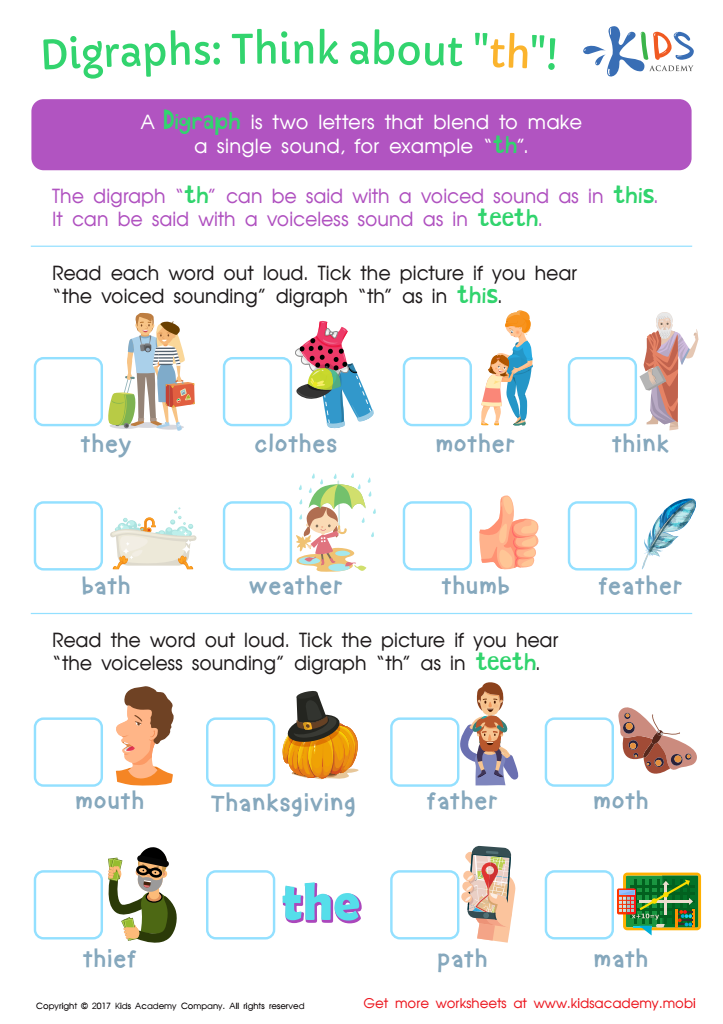

Digraphs: Think About "th" Worksheet


Shhh... What Digraph? Worksheet
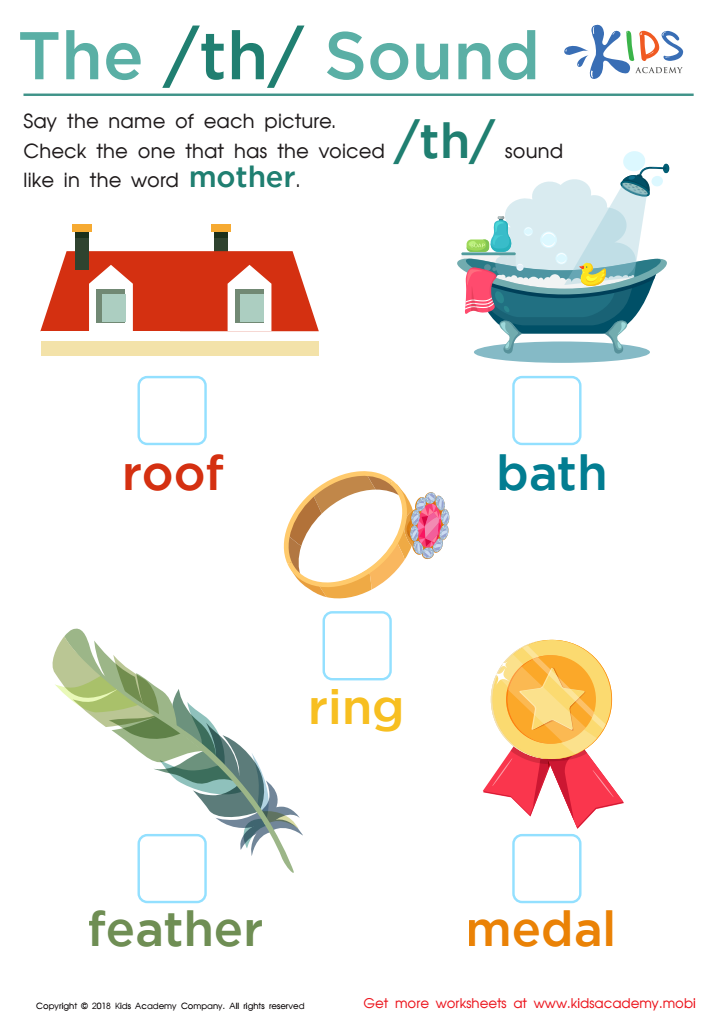

The /th/ Sound Worksheet
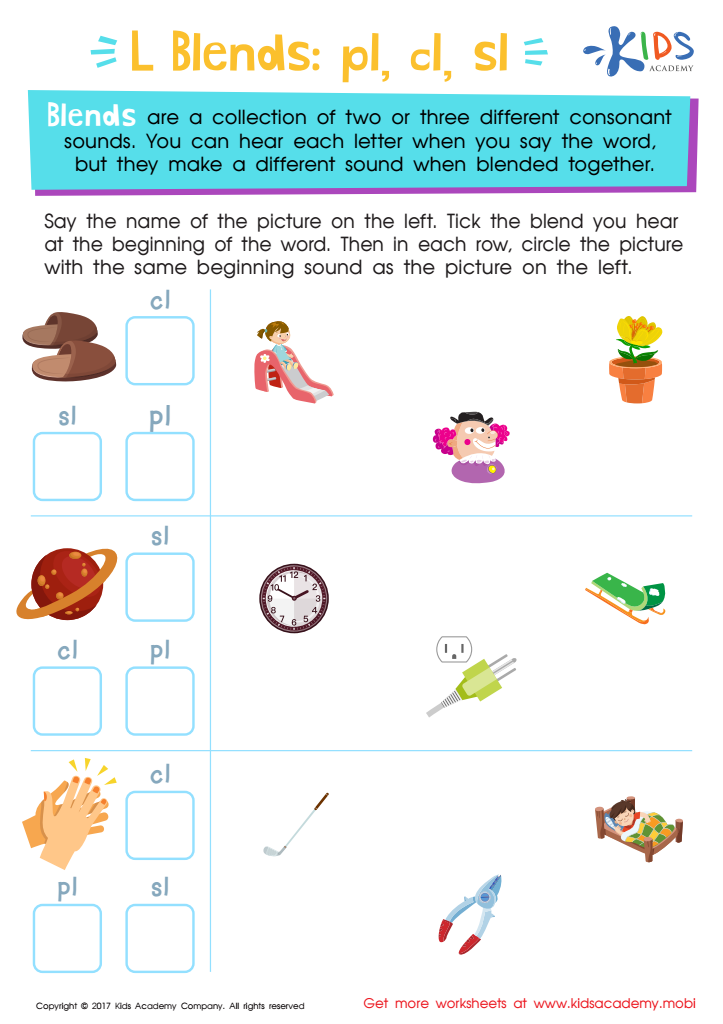

L Blends: "Pl", "Cl" and "Sl" Printable
Vocabulary enhancement and understanding consonant digraphs are crucial elements in early childhood education, serving as foundational pillars for literacy development. For young learners ages 3 to 6, vocabulary enrichment not only aids in cognitive development but also enhances communication skills, empowering them to express thoughts and emotions effectively. A robust vocabulary is linked to better comprehension abilities which translate into improved reading and academic performance in later years.
Consonant digraphs, combinations of two letters producing a single sound such as "sh", "ch", or "th", are essential for decoding words. Mastery of these digraphs enables children to swiftly identify and sound out words, advancing reading fluency. This, in turn, boosts confidence when confronted with new and complex words, fostering a positive and proactive approach to learning.
Moreover, early proficiency in vocabulary and consonant digraphs aids in the development of phonological awareness — the ability to recognize and manipulate sounds in spoken language. This skill is a proven predictor of future reading success. Teachers and parents play a pivotal role by incorporating playful and engaging learning activities that stimulate interest and reinforce these concepts.
Investing in vocabulary enhancement and understanding consonant digraphs equips young minds with the tools necessary for lifelong learning and development, emphasizing the importance of early intervention and support.

 Assign to My Students
Assign to My Students




